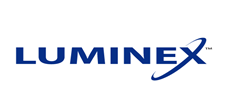Sponsored content from Luminex Software, Inc.

Big data is big business for today’s enterprises.
While mainframes provide a safe and central location for the collection and storage of data, their legacy I/O interface for sharing this data with the rest of the enterprise — and third parties — is often the weak link, especially as the volume that needs to be sifted through grows exponentially from megabytes and gigabytes to terabytes and petabytes.
The MDI platform from Luminex facilitates bidirectional data movement to and from the mainframe, on a scale of speed and versatility that enables businesses to extract the most value across multiple platforms, thereby supporting the mainframe to remain an integral part of an enterprise’s ecosystem.
Why switch to MDI?
MDI offers substantial performance improvements over the legacy TCP/IP stack in three key metrics:
1. Transfer Speed
Compared to TCP/IP’s slow connection speeds, which were developed decades ago, MDI moves data bidirectionally via tape FICON channels that are orders-of-magnitude faster, and are capable of using multiple 10 GbE channels.
In the real world, this translates into substantial reductions in wall-clock time. For example, an insurance company used to spend two days aggregating data to an Azure Data Lake for actuarial risk analysis. By using MDI, the transfer time was reduced to under two hours. Another client in retail shortened the time it took to upload 40 GB of files from 191 minutes to 49 minutes, using a 1 GbE connection to Google Cloud for business modeling — a 68% reduction in elapsed time.
The MDI platform is also fully scalable so that it can be readily tailored to match and grow with the performance needs of the customer.
2. Network Security
TCP/IP-based data transfers have long been targets for security risks such as data breaches and malicious attacks. With MDI, there are no open ports and network connections. Since it utilizes the same FICON channels as in mainframe tapes, the channels are inherently secure with physical plugin connections on both ends.
Combined with the MDI SecureTransfer custom software, network admins can now quickly transfer large data files by simply executing a standard mainframe utility IEBGENER for files, without worrying about unauthorized access. Additional features include detailed logging, real-time monitoring, performance reports, AES-256 encryption, and concurrent transfers. All are straightforward to deploy with no digital certificates required.
MDI also offers a complete suite of data integration, replication, and migration tools that focus on security and ease of use. Advanced functionalities such as synchronous tape matrix, push-button DR for instant setup and testing, and virtual CloudTAPE are all designed for moving mainframe data safely while maximizing its value contribution.
3. Resource Efficiency
The mainframe TCP/IP stack is resource-intensive and places a heavy load on the CPU. In contrast, the FICON channels are very efficient at shifting data. Therefore, valuable efficiencies are gained by moving data quickly off the mainframe via the MDI platform using FICON and sharing them with third parties. MDI offers customized solutions to connect with any number of open systems including Hadoop, Kafka, Confluent, and the Cloud via capacious 10 GbE connections. This greatly reduces CPU overhead on the mainframe.
In addition, MDI converts offloaded data from EBCDIC to ASCII and other data formats including encryption if needed, further reducing mainframe CPU load.
MDI clients report a well over 90% reduction in both MIPS consumption and CPU time after installing its platform.
With big data comes the need for highly efficient data movement both to and from the mainframe. The legacy TCP/IP interface has clear performance limitations and is insufficient to fulfill this role, whereas MDI provides fast, secure, highly customizable data-sharing solutions between the mainframe and virtually any distributed systems, empowering enterprises to quickly and thoroughly yield big value from big data.

Mark Guo is a copywriter at Luminex Software, Inc.